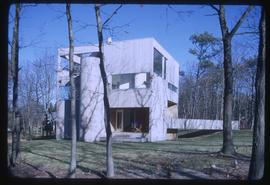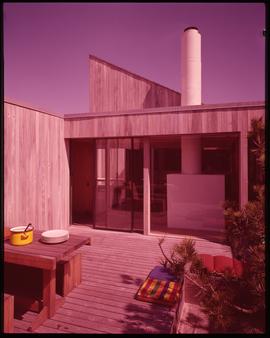Identity elements
Reference code
US NBP 2012.MARIS-F04
Name and location of repository
Level of description
Series
Title
Julian and Barbara Neski
Date(s)
- 1969-1976 (Creation)
Extent
35mm slides
Name of creator
Biographical history
Julian Neski (1927-2004) and Barbara Neski (1928-) were an architectural team based in New York City that helped revolutionize domestic design in the 1960s-1970s. Together, they designed more than 35 distinct vacation houses, many of which can be found in the East Hamptons.
Name of creator
Biographical history
Julie Semel was born in July 1941 in Brooklyn, New York. She grew up in New Jersey and graduated from Rutgers University. She had a brief career in social work before beginning work with Bill Maris in 1969 when he hired her as an assistant. Over the subsequent years, Semel's creative role expanded to include collaboration on photographic works. They were married in 1977. Many of the photographs in the Pratt Institute collection are credited to both Semel and Maris as Maris/Semel or as their corporate name, Semarco Inc. Their works frequently constituted as many as 30 pages a month across various publications during the 1970s and 1980s.
Bill Maris passed away unexpectedly on December 16, 1986 in New York City. After Maris's death, Semel continued to photograph products at their Manhattan studio and to produce architectural, garden, and design stories for magazines. In 1998, Semel also began to produce articles and photographic essays for travel industry clients. Her clients have included the national tourism boards of Italy and Germany. She continues to work in the travel photography industry.
Content and structure elements
Scope and content
35 mm slides





